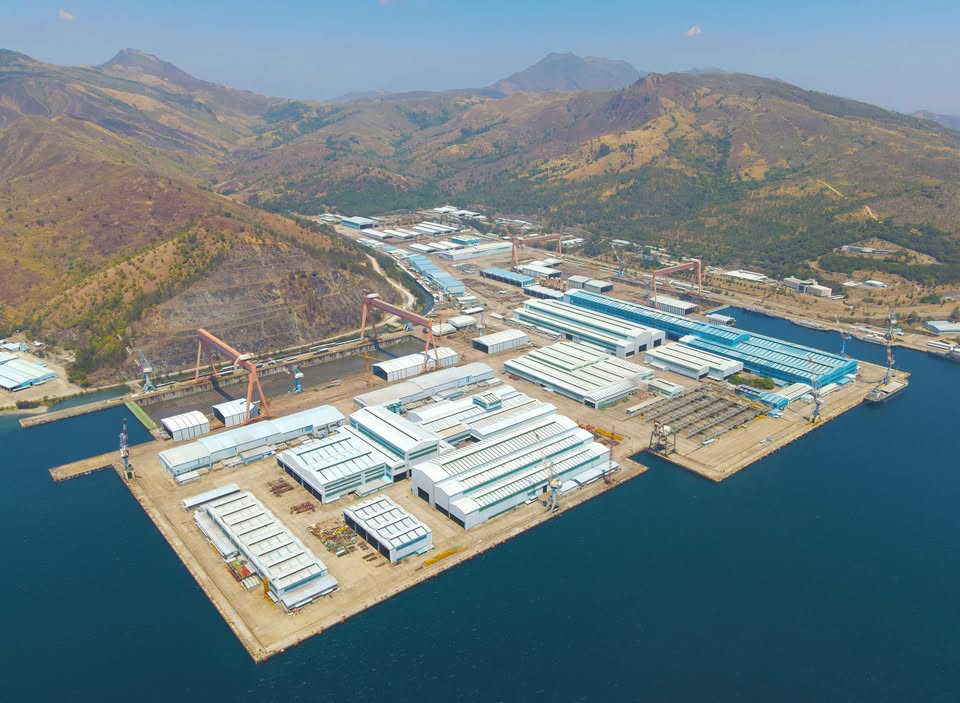Subic Bay Shipyard Re-Opens after U.S., South Korean Investments
Subic Bay Shipyard Reopens Amid U.S.-Korean Investment

The Philippines has officially reopened the HD Hyundai Heavy Industries shipyard in Subic Bay, thanks to significant investments from South Korea and the United States. The inauguration, led by President Bongbong Marcos, included a ceremonial steel cutting for the yard’s first vessel, signaling a revival of the long-closed shipbuilding complex. This development is expected to enhance the country’s shipbuilding capacity and create thousands of jobs by 2030.
Revitalizing Shipbuilding in the Philippines
During the inauguration ceremony, President Marcos emphasized the Philippines‘ historical role as a provider of skilled seafarers, stating, “It is only fitting that we supply the world with excellent vessels to sail on.” The reactivation of the Subic Bay shipyard is projected to increase the nation’s annual shipbuilding output from 1.3 million to 2.5 million deadweight tons. By 2030, the facility is expected to employ approximately 4,300 Filipinos, significantly boosting local employment opportunities.
The shipyard’s capabilities will also expand the production of large oil tankers from five to eight vessels annually. Kim Sung-Joon, CEO of HD Korea Shipbuilding and Offshore Shipbuilding, remarked that this development positions the Philippines as an emerging power in the global shipbuilding market. The shipyard is located within the former Hanjin Heavy Industries complex, which had previously declared bankruptcy in 2019. The site was the center of a competitive bidding process between U.S. and Chinese interests, ultimately leading to its acquisition by American investment firm Cerberus Capital Management.
Now renamed Agila Subic, the shipyard joins other tenants, including the Philippine Navy and American defense contractor Vecturus. The reopening of the shipyard is part of a broader strategy to enhance U.S. military presence in the region, with recent initiatives including the establishment of a U.S. Marine Corps prepositioning site and munitions plant in Subic Bay.
Strategic Partnerships and Future Prospects
While the inaugural event focused on commercial shipbuilding, Hyundai Heavy Industries has plans to utilize the Subic Bay facility for warship production aimed at the Philippines and regional clients. The Philippine government has prioritized South Korean shipbuilders for its naval modernization program, particularly in light of rising tensions in the South China Sea. Since 2016, HD HHI has secured contracts for four frigates and six offshore patrol vessels from the Philippines and is preparing for additional bids in the ongoing military modernization efforts.
South Korean Ambassador to the Philippines, Lee Sang-hwa, highlighted the importance of trilateral cooperation in making the Subic Bay shipyard a reality. He stated, “Together, we are not only rebuilding a shipyard – we are strengthening bridges across the Pacific.” The ambassador also called for increased South Korean investments in American shipbuilding, noting the need for collaboration to address domestic shipbuilding challenges in the U.S. amid China’s dominance in the sector.
Lee’s remarks underscored the spirit of cooperation reaffirmed at the recent ROK-U.S. summit, emphasizing the potential for joint efforts to revitalize shipbuilding in both the Philippines and the United States. As the Subic Bay shipyard begins its new chapter, it stands as a testament to the strategic partnerships that are shaping the future of maritime industries in the region.
